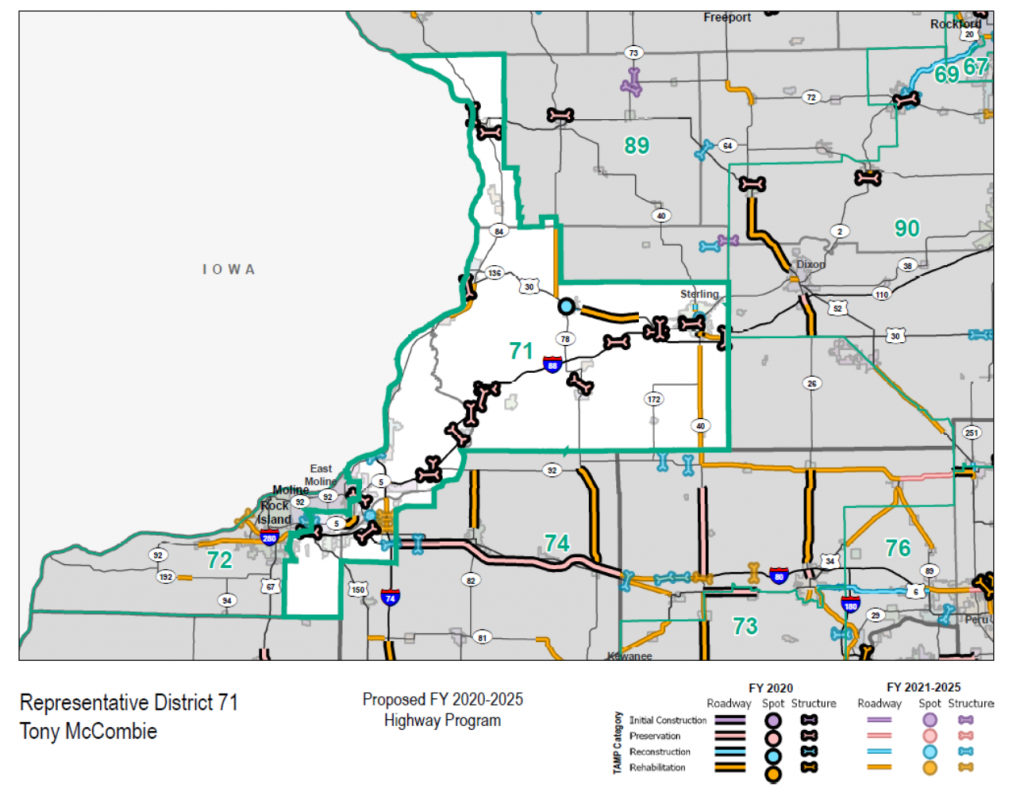IDOT Multi-Year Plan for District 71

Executive Summary of FY 20-25 Highway Improvement Program
Guide to Highway Project Listings
“State of Acceptable Condition” Map
The Illinois Department of Transportation published its much anticipated Multi-Year Program (MYP) for FY20-FY25. This annual publication is the first to include the additional capital funds from the $45 billion Rebuild Illinois capital infrastructure plan that was passed and signed into law at the close of the Spring Session. The MYP contains only the state infrastructure plan for roads and bridges, and was created using a different planning model called the Transportation Asset Management Plan (TAMP), which is a risk-based asset management plan required by the National Highway System to improve or preserve the condition of the assets and the performance of the highway system. In short, TAMP prioritizes the maintenance of roads and bridges to the save the state money in an effort to maximize federal match.
The MYP program includes:
· Roadway Maintenance – $7.58 billion
· Bridges – $4.99 billion
· Safety/System Modernization – $1.59 billion
· Expansion – $3.08 billion
· System Support – $2.11 billion
The MYP is a project outlay for state spending on roads and bridges and is in addition to the roughly 68% increase that units of local government should already be receiving through the new Transportation Renewal Fund, which distributes the proceeds from the recently enacted $0.19 motor fuel tax that was enacted this year.
What is the Transportation Asset Management Program?
In 2017, IDOT began developing its first Transportation Asset Management Plan (TAMP) to guide the agency’s new approach to operating, maintaining and improving the state’s vast network of highways and bridges.
Illinois’ final TAMP was submitted to the Federal Highway Administration (FHWA) on June 28, 2019 and approved by the FHWA on August 29, 2019. While a big change for Illinois, the new guidelines driving IDOT’s asset-management decisions will create a stronger, safer transportation system for all who use it.
To put it simply, the TAMP prioritizes the maintenance of roads and bridges to save the state — and taxpayers — money in the long run, just as we spend money on things like oil changes and fresh paint to maintain our vehicles and homes to avoid more costly repairs later. This maintenance is known as preservation in the transportation industry.
Learn more here.